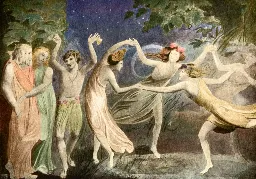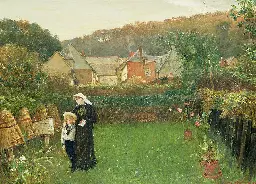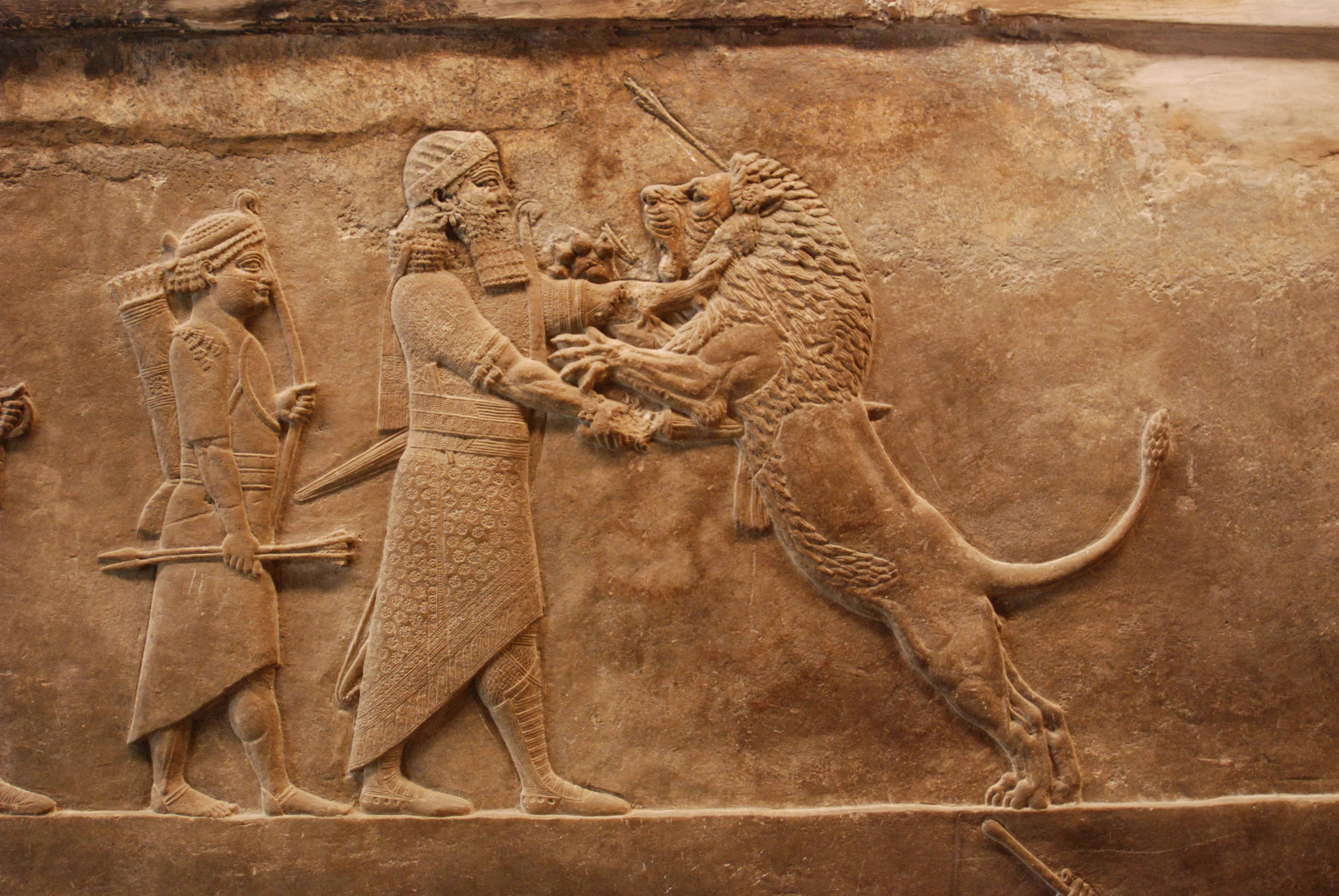
Folklore, Myths, Legends, and Fairy Tales
- Charlie Cooper’s Myth Country, BBC iPlayer UKwww.bbc.co.uk Charlie Cooper’s Myth Country - Series 1: 1. Black Shuck
Charlie goes in search of Black Shuck, the demon dog of East Anglia. Keen to capture the beast on camera, he attempts an overnight stakeout, with unexpected consequences.
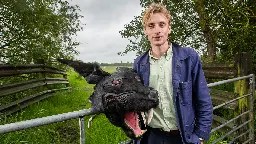
- How Rome killed polytheismmedium.com How Rome killed polytheism
Polytheism is a complicated world. Etymologically, it just means believing in multiple gods. But its history is more complicated than that…
- 'Zeus made night from mid-day': Terror and wonder in ancient accounts of solar eclipseswww.livescience.com 'Zeus made night from mid-day': Terror and wonder in ancient accounts of solar eclipses
For millennia, solar eclipses like the upcoming one on April 8 have inspired awe, wonder and fear. Here are some of the most intriguing accounts of solar eclipses from ancient Greece to the Mayan empire.

For millennia, solar eclipses have inspired awe, wonder and fear. After all, it's not often that twilight descends in the middle of the day. And just as we plan for and anticipate their occurrence — like the total solar eclipse that will be visible to millions of North Americans on April 8 — ancient cultures across the world, from the Mayans to the ancient Greeks, developed their own mythologies and traditions around eclipses.
So what did these people think when they saw the sun darkening during the day?
On a surface level, people from ancient cultures knew exactly what they were looking at. "Anybody who pays attention to the sky would be well aware that the moon is blocking the sun," Anthony Aveni, a professor of anthropology and astronomy at Colgate University in New York, told Live Science. But the significance of that event would have been very different to ancient peoples. "Cultures other than our own, both present and past, had a very different take on the natural world," Aveni added.
- Potato charms: people throughout history have kept and even stolen wrinkly old vegetables for their healththeconversation.com Potato charms: people throughout history have kept and even stolen wrinkly old vegetables for their health
Screaming mandrakes, purloined potatoes and heat-giving sunflower seeds were thought to have healing properties.

In 1897, one Mr Burgess, the Clerk of Works at Oxford University, donated two shrivelled potatoes to the Pitt Rivers Museum. He usually kept them in his pockets. They were the ultimate “jacket” potatoes.
The Pitt Rivers Museum in Oxford is dedicated to categorising and displaying a “democracy of objects” not according to time or nation, but according to human usage. Since the potato is fairly ubiquitous in human culture, it means there are many in the museum’s collection.
In addition to Burgess’s donation, 11 other wrinkled specimens are catalogued in the museum’s collections, and are neatly labelled. The names of the previous owners are usually not identified because most of the potatoes were stolen before they were donated.
But why would someone would want to steal a wrinkly potato? The answer is these were not just any purloined spuds. They were medical charms thought to be cures for rheumatism – and if they were stolen, they were thought to be even more effective.
- Folktales like philosophy startle us into rethinking our values | Aeon Essaysaeon.co Folktales like philosophy startle us into rethinking our values | Aeon Essays
Both folktales and formal philosophy unsettle us into thinking anew about our cherished values and views of the world

- Getting Started with Folklore & Folklore Studies — H Y L D Y Rwww.hyldyr.com Getting Started with Folklore & Folklore Studies — H Y L D Y R
An approachable guide intended as an ideal place to start with folklore and folklore studies, including suggested activities, resources, and misconceptions to avoid.

- Festival with 1,000-year history succumbs to graying populationwww.japantimes.co.jp Festival with 1,000-year history succumbs to graying population
Kokuseki Temple's Sominsai festival used to take place from the seventh day of Lunar New Year through to the following morning.

- February and Roman godsgodsip.club February Stars
Since several millennia, February, or these weeks of the year, has always been special. Among Romans, there were many festivities which took part in these days, and were deeply linked with the concept of rebirth or purification. It’s always fascinating, for me at least, to imagine how Winter and Spr...

- Happy Grundsaudaag! The ancient Germanic history of Groundhog Daywww.bbc.com Happy Grundsaudaag! The ancient Germanic history of Groundhog Day
You say Groundhog Day, I say Grundsaudaag: how German and Swiss settlers in Pennsylvania created a new language – and a much-loved American holiday.
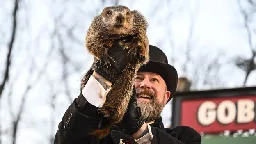
- The Golden Boughgodsip.club The Golden Bough
An Unexpected Journey 🔗First of all, thank you if you are reading this. It will be different from the other blog articles I have in mind: as an introduction, I want to let you know how the idea about this website was born and what it is meant to be – in my mind, at least. Now, I’d like to point out...

I'm glad I discovered this Lemmy community!
I'd like to share my blog, called Godsip Club, where I like to share my findings about folklore, mythology and religion — I am no scholar, though! This is the link of the first article, a sort of introduction, which is about the book by Frazer. It is a tough reading (the book, not the article 😅), but I'd absolutely recommend it to all the fond of these subjects: it's available for free on Project Gutenberg!
- Sacred-Texts ISTA - Internet Sacred Text Archivesacred-texts.com Home - Sacred-Texts ISTA - Internet Sacred Text Archive
Internet Sacred Text Archive - Quiet place in cyberspace devoted to religious tolerance and scholarship.
- You've heard of Santa, maybe even Krampus, but what about the child-eating Yule Cat?
cross-posted from: https://lemmy.ca/post/12039449
> Christmas time is upon us, and though children loathe getting new clothes for gifts, they best put on that new itchy sweater or slide on those unwanted socks. Or else risk being eaten alive by a giant cat, at least according to Icelandic folklore. > > That's right. A child's worst nightmare — new clothes under the tree — could only be outdone by a somehow worse nightmare, being devoured by a ferocious feline that hunts down children caught not wearing their new clothes. > > The tale of Jólakötturinn, which translates to Yule Cat, is an Icelandic Christmas classic dating back to at least 1932, according to the Icelandic Folklore website, a research project managed by the University of Iceland. > > Jóhannes úr Kötlum, an Icelandic poet, wrote about the Yule Cat in his book, Jólin koma (Christmas is Coming), published in 1932. > > Kötlum's poem tells the tale of a cat that's "very large" with glowing eyes. It roams the countryside, going from house to house looking for children who aren't wearing the new clothes they got for Christmas, according to the poem. > > Memes of the Yule Cat have been making their way around social media, some are meant to be spooky, while others are a blend of fascination and satire. > > "I am really fascinated by other culture's holiday traditions so shoutout to my boy the Yule Cat," one meme reads. "A monstrous cat who roams Iceland eating people who aren't wearing the clothes they got for Christmas." > > The Yule Cat isn't the only sinister character that comes around Christmas. > > Another European folklore character is Krampus, an anti-Santa demon that kidnaps and punishes naughty kids, according to mythology.net. Munich, Germany, hosts an annual Krampus run, which attracts hundreds of participants — and more spectators — every year. > > Source: https://www.npr.org/2023/12/23/1221454825/youve-heard-of-santa-maybe-even-krampus-but-what-about-the-child-eating-yule-cat
- Myths and Legends of Cornwallworldsensorium.com Myths and Legends of Cornwall
Myths and Legends of Cornwall By Olivia Mermagen Sign up for our monthly newsletter! I first met Sophie when I was 13 years old at boarding school in Brighton, England. She was bold, brash, kind, and a little crazy, so I was instantly entangled in a friendship that more closely resembled a love affa...

- Why Tolkien and C.S. Lewis explored the flat-Earth “absurdity”bigthink.com Why Tolkien and C.S. Lewis explored the flat-Earth “absurdity”
Narnia and early Middle-earth were pancake-esque — but their creators took differing views on de-globalization.

- The legend of the cock eggwww.muranochickenfarm.com The legend of the cock egg
Have you ever heard of a cock egg? It's just a really tiny egg which was laid by a hen, but legend has it that it was laid by a rooster and would turn into a fearsome rooster serpent beast if incubated by a toad! Hold onto your fairy eggs, this is scary stuff!

- Episode 33: Fairytales and their social and political implications with Dr. Jack Zipes

YouTube Video
Click to view this content.
- The Loch Ness monster and the story behind the mysterious water beast theories - 90 years since first photonews.sky.com The Loch Ness monster and the story behind the mysterious water beast theories - 90 years since first photo
With 1,155 official sightings and counting, Sky News speaks to various figures involved in the hunt for Nessie - including the scientist who wouldn't rule it out...

- On catsgoing-medieval.com On cats
The other night I was mindlessly scrolling about on my phone through Instagram, as one does when they really ought to go to bed but are stuck being entertained instead of resting, when I came upon …
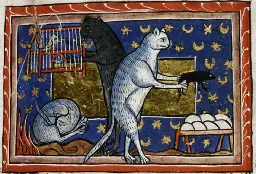
- Every story in the world has one of these six basic plotswww.bbc.com Every story in the world has one of these six basic plots
Researchers analysed over 1700 novels to reveal six story types – but can they be applied to our most-loved tales? Miriam Quick takes a look.

- Before Haunted Houses, There Were Hell Banquets: The macabre feasts have their roots in ancient Rome.www.atlasobscura.com Before Haunted Houses, There Were Hell Banquets
The macabre feasts have their roots in ancient Rome.

- The curse of Frankenstein: how archetypal myths shape the way people think about sciencetheconversation.com The curse of Frankenstein: how archetypal myths shape the way people think about science
Critics of controversial science like GMOs and cloning often invoke the myth of Frankenstein to highlight the dangers of new technology. But these critics may overlook the moral of Shelley’s story.

- How to Make a Monster: Ideas about monstrosity were fundamental to ancient and medieval debates about the nature of humanity, and the rhetoric of monstrosity was widely used to dehumanize groups.www.medievalists.net How to Make a Monster - Medievalists.net
Ideas about monstrosity were fundamental to ancient and medieval debates about the nature of humanity, and the rhetoric of monstrosity was widely used to dehumanize certain groups in medieval Europe.
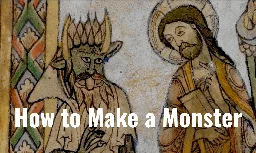
Monsters haunt the physical and imaginative remains of the Middle Ages. They stalk the pages of manuscripts, peer out from cathedrals and castles, and even appear in the most historical of literary genres, medieval chronicles. But monsters weren’t just decorative. Ideas about monstrosity were fundamental to ancient and medieval debates about the nature of humanity, and the rhetoric of monstrosity was widely used to dehumanize certain groups in medieval Europe.
- The Folklore of Bee's in Shropshirenearlyknowledgeablehistory.blogspot.com The Folklore of Bee's in Shropshire
Bees are wonderful little things. They have been guardians of the natural world for 130 million years and play an integral role in maintai...
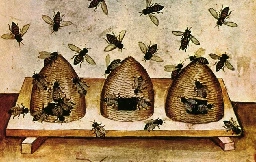
- Appalachian Folk Magic: Generations of “Granny Witchcraft” and Spiritual Workfolklife.si.edu Appalachian Folk Magic: Generations of “Granny Witchcraft” and Spiritual Work
In the Appalachian Mountains, folk magic goes by many names: root work, granny magic, kitchen witchery, Braucherei, witchcraft.

- Kulning: The Swedish Herding Calls of the Northfolklife.si.edu Kulning: The Swedish Herding Calls of the North
In its original context, kulning is a group of labor songs developed out of needs rather than musical expression.

- Man of the People | The history and context of Aleksandr Afanasev’s obscene Russian folktales.www.laphamsquarterly.org Man of the People | Story Ponvert
The history and context of Aleksandr Afanasev’s obscene Russian folktales.

- African Folktales Reimaginedwww.nerds-feather.com African Folktales Reimagined
A fantastical change of pace with insights into African folktales. Tucked away in Netflix’s expansive science fiction and fantasy collect...

- Jason and the Argonauts: A Detailed Breakdown of the Greek Mythwww.thecollector.com Jason and the Argonauts: A Detailed Breakdown of the Greek Myth
Jason and the Argonauts were legendary adventurers. They traveled the ancient world and encountered many wonders and woes.

- An 1859 History Book Says This Is The Devil’s Footprint

YouTube Video
Click to view this content.
Dime Store Adventures is a great channel on New England folklore, highly recommend.
- Viriditas: Musings on Magical Plants: Artemisia vulgarisworldsensorium.com Viriditas: Musings on Magical Plants: Artemisia vulgaris
Viriditas: Musings on Magical Plants Artemisia vulgaris By Margaux Crump Sign up for our monthly newsletter! Mugwort is steadfast. It is the first herb I worked with beyond everyday cooking and has been with me ever since. A perennial plant from temperate Europe, Asia, and northern Africa, Artemisia...

